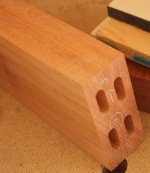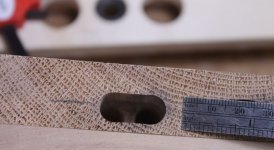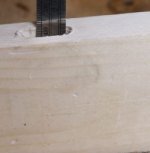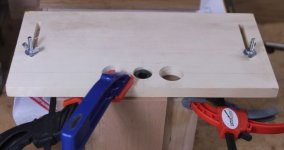ChuckS said:
FWIW, the manual says 8mm tenons are common for 3/4" (19mm) lumber (hardwood), while 6mm tenons for 3/4" plywood (1/3 of 19mm). If 8mm is good for 19mm hardwood, it sure is suitable for 20mm hardwood. For structural applications in 3/4" hardwood, I always use 8mm tenons, otherwise 6mm tenons because they're cheaper.
Very similar for me, but I don't do much that I would consider
structural with 3/4" hardwood. When it gets to that point, it's usually thicker stock. I'm almost up to the point of needing DF700.
I should just go ahead and do it. It took a while to justify the Lamello Zeta P2, but have never regretted that.
Although, I did see that Peter Millard (10 min workshop) does not get along with his?
Somehow, I think someone is missing something there though, whether it's him or me, I don't know?
He showed an example of rotating a cabinet carcass and it collapsing on him. It was a mitered unit with a shelf in the middle. He used the Tenso connectors, unglued, and it just popped apart.
My thought is that this is the worst case scenario possible? I understand the concept of knock-down (KD) fixturing, but is that really a thing with mitered corners? If not, just glue it and problem solved.
I approach it differently though. I never rely on Tenso alone. I use them as a clamping aid in situations where that is difficult and use Dominos as the main structural element.
In his example (even if you needed KD with miters) the Dominos would have held that together just fine.
I have used them together many times on large wall panels and they work great. The Dominos hold everything aligned and the Tensos snap them tight. This is why I buy the 6mm Dominos by the case, rather than the little retail display packs.






